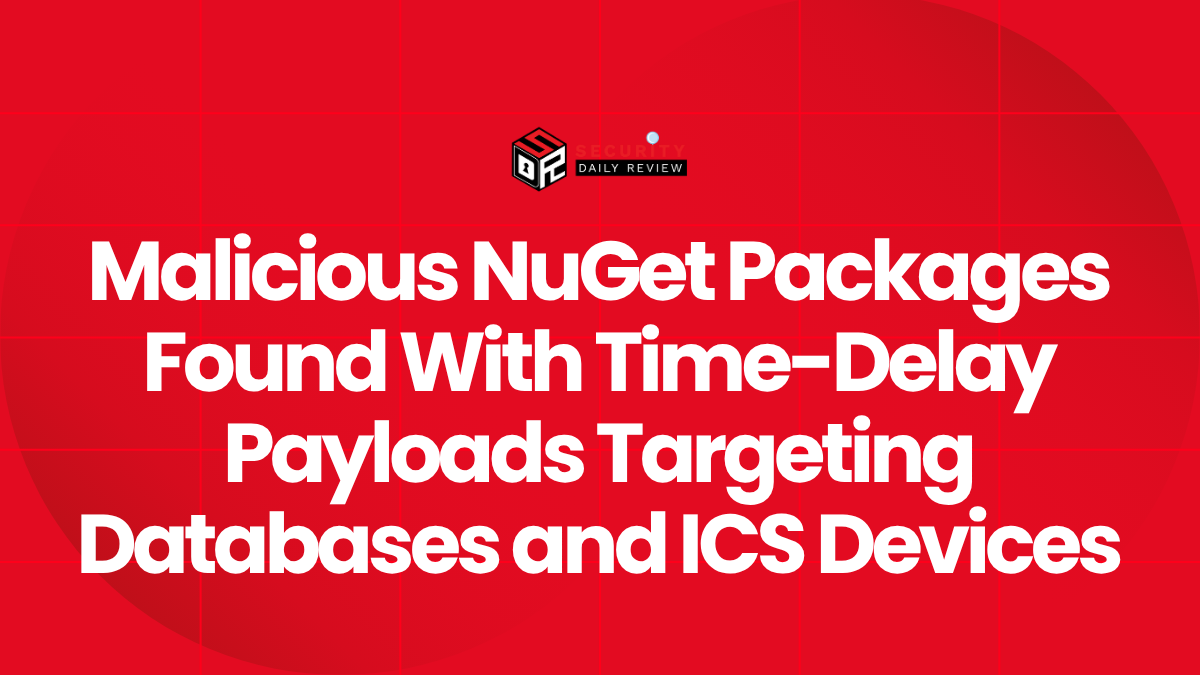In a disturbing evolution of supply chain attacks, several malicious NuGet packages have been found containing time-delayed sabotage payloads aimed at enterprise software systems and industrial environments. These carefully crafted components, distributed via Microsoft’s NuGet package manager, are designed to sit silently in software implementations and activate in the years 2027 and 2028, causing damage to database-backed applications and industrial control systems (ICS).
Attackers Are Shifting Toward Long-Term Persistence
Security researchers have discovered that several of these infected NuGet packages contain dormant payloads programmed to trigger several years into the future. This unusual tactic marks a departure from conventional malware operations, which typically execute shortly after installation.
Malicious Packages Bypass Developer Suspicion
The malicious libraries were embedded into what appeared to be legitimate NuGet packages, enabling them to slip past developers’ notice and integrate into mainstream .NET applications. These packages take advantage of the trust developers place in commonly used software repositories.
The key novelty in this scheme lies in stealth and longevity. The weaponized packages:
- Contain logic that delays execution until a hardcoded date in 2027 or 2028
- Perform sabotage operations only under very specific conditions
- Remain inert in testing environments, making detection extremely difficult
By deferring execution until years into the future, the attackers aim to avoid immediate discovery, buying time until the booby-trapped components are deeply embedded in critical production environments.
Targeted Payloads Pose Risk to Industrial and Backend Systems
The payloads embedded in these malicious NuGet packages are engineered to affect software systems in highly specialized ways. Targets appear to include:
- Relational Database Applications : The sabotage code can execute SQL commands with the potential to destroy or manipulate data. For example, one payload can trigger SQL commands to remove essential data entries or alter key fields. The malicious logic checks for database implementation classes in .NET applications and only acts when such classes are in use.
- Industrial Control Systems Using Siemens S7 Protocol : Particularly concerning is payload code targeting Siemens S7 devices, widely used in ICS and operational technology (OT) environments. By interfacing with the Siemens S7 communication protocol, these implants could interfere with or disable automation processes long after the initial infection.
This dual-targeting capability suggests a level of technical sophistication and intent not typically associated with common opportunistic malware—pointing instead toward software supply chain attacks with potential geopolitical or economic motivations.
Timeline-Based Execution is a Novel Obfuscation Tactic
The use of time-based logic as an obfuscation method enables malicious code to blend in with non-hostile libraries. Detection bypass appears to be a central design priority.
Weaponizing the Software Development Lifecycle
This attack adds a new dimension to the growing threat of [software supply chain attacks](source ). Unlike typical threat vectors that aim for immediate control or ransom, this method weaponizes trust relationships in the development lifecycle.
Security analysts have noted the following features in the investigated packages:
- Conditional activation on dates in the mid to late 2020s
- Environment checks to ensure the payload only triggers in production (not testing or staging)
- Calls to system-level functions capable of disabling processes or manipulating I/O operations
This strategy may indicate that the attackers are placing long-term implants into the technology fabric of targeted organizations or nations.
Mitigation Hinges on Code Audits and Dependency Hygiene
Protecting against this class of malware requires more than just perimeter defenses. Since the NuGet platform serves as a central dependency manager for the .NET ecosystem, compromised libraries can easily propagate downstream without raising alarms.
Recommendations from security experts include:
- Conducting static and dynamic code analysis of third-party packages
- Using allowlists and signed packages wherever possible
- Establishing dependency checkers with logic to flag suspicious code, particularly any referencing future dates or containing S7 protocol calls
- Monitoring for abnormal network behavior tied to ICS protocol communication
Application developers are also encouraged to maintain a secure [software bill of materials (SBOM)](source ) to trace the provenance of third-party packages.
A Wake-Up Call for Industrial and Application Security
This incident underscores the increasing convergence of [application security](source ) and industrial cyber-defense. Attackers are no longer limiting themselves to stealing data or locking systems—they are now planting logic bombs designed for precise, long-term sabotage.
Given the reliance on packages like those from NuGet in modern software architecture, the cybersecurity community must prioritize early detection of latent threats, even those whose effects may not manifest until years down the line. The potential consequences for both business systems and critical infrastructure are far too high to ignore.









